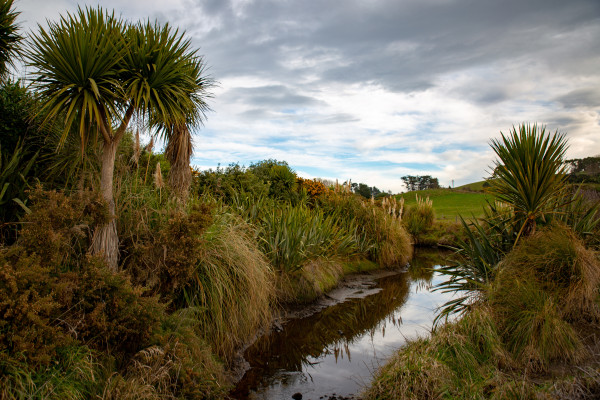Water quality research
As a scientist Dr Richard Muirhead has been trained not to accept assumptions about farming and water quality impacts. He prefers to let his research doing the talking, and while Richard isn’t in the business of myth-busting, the latest findings from a series of experiments conducted over the last decade could definitely be categorized as such.
The results have just been published in the Journal of Environmental Quality and in a nutshell, they have shown that sheep grazing has 4 times higher levels of E. coli in runoff than dairy cows.
While this didn’t come as a great surprise in scientific circles given previous research had indicated the risk may in fact be much higher, the results have a number of implications for the management of grazing animals.
Foremost among those, Richard says, is providing evidence-based insights to help great greater awareness and correct the perception that dairy cows are the main contributors to water contamination here in New Zealand.

New research by Dr Richard Muirhead is debunking assumptions made about farming and water quality.
Our job is to find, using robust science, exactly what are the causes and risks to water quality from grazing animals and in this research we wanted to find out more about E. coli concentrations in runoff. The Government has set some ambitious swimmable river targets so this study, and its results, provide valuable information for farmers and other stakeholders who are interested in managing grazing animals in a way that protects water quality.”
The research was conducted at Invermay Agricultural Centre (near Dunedin) where Richard is based. AgResearch owns a farm there where our scientists can conduct experiments at plot or farm scale. Research had shown sheep excretion rates were as much as 100 times higher at equivalent stocking rates. Dr Muirhead and his team measured the average E. coli concentrations from cow and sheep-grazed plots with a like-for-like stocking rate.
The team used rainfall simulation technology, as well as naturally occurring rain events, and dung from the Invermay campus flock on the six plots that measured 3m x 1.5m. A monthly grazing cycle was simulated by removing grass with hand shears.
However, the latest results – 13,000 mpn 100 ml−1 (for sheep), while the average concentration from cow-grazed plots was 3300 mpn 100 ml−1 - means that the E. coli runoff concentrations from sheep-grazed plots were four times higher than those from cow-grazed plots.
“We found that comparatively speaking sheep grazing is potentially a higher risk when it comes to contaminating water with E. coli.
“These results are a reminder that sheep farmers need to be equally vigilant.”
More research is needed to understand the factors that affect the concentration and hydrology of E. coli in runoff and how this runoff impacts on the swimming water quality standards.
However, Richard hopes the research, which has been shared with industry bodies and regional councils said, will lead to the same awareness in the sheep grazing sector about E. coli contamination of water sources as is already the case in the dairy industry.
The experiment work was funded by MBIE through the Clean Water: Productive Land project lead by AgResearch. The publication of the work was funded by the AgResearch Strategic Science Investment Fund.
The published article is open access and can be found here: https://doi.org/10.1002/jeq2.20448(external link)